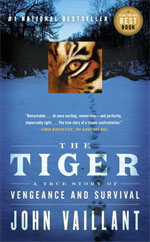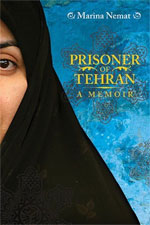“Canada Reads is staging a turf war for 2013, with the five competing books each representing a different region of the country. Those five books will be defended by five celebrity champions and battled down to one winner the book all Canadians should read.”
One of my favourite parts of the extended Canada Reads 2013 ramp-up has been the weekly Twitter chats hosted by CBC Books – one chat focused on each of the five contending books, plus one chat wrapping it all up, looking at common themes, making predictions and so on.
During that final chat, I came to a couple of realizations. What dawned on me then will appreciably inform my perspectives and reactions going into the broadcast (radio, video, liveblog, podcast, Twitter commentary using the #canadareads hashtag, et al) debates from Monday, February 11th to Thursday, February 14th, when a final survivor/winner receives a Canadian book sales Valentine. (You can check out a replay of that final chat here.)

First, it occurred to me that among the five finalist books, there was neither a singular book that captivated me vastly more than the others, nor was there one that aggrieved me as so patently unsuitable, so not in the league of the others or of the overall Canada Reads honour. Indian Horse by Richard Wagamese puts indelible and courageous faces to Canada’s dark chapter of residential schools and their abuses on First Nations families and children. The Age of Hope by David Bergen traces the adult life of a small town Canadian woman from pre-World War II to the 1980s and asks if a life seemingly quietly lived is still rich and fulfilled. Two Solitudes by the late Hugh MacLennan was written in the World War II era and offers still potent reflections on the polarities of English and French Canadian society, traditions, politics and more. Away by Jane Urquhart tells a mystical, folkloric multi-generational tale that travels from Ireland in the 1840s through to contemporary settings in Quebec and Ontario. February by Lisa Moore focuses in heartwrenching and intimate detail on the effects, leaping back and forth in time, of the 1982 Ocean Ranger oil rig disaster on one woman and her family.
Themes of the personal and political intersect in various of the books and are echoed between books. Plot lines, secondary threads or references to everything from prejudice to tragedy to individual vs tribal, social or communal identities to, of course, hockey appear in some form or another in all of the books.

OK, I do have a couple of favourites. To my mind, the descriptions in Indian Horse of the physical exhilaration of hockey played flat-out in bracing cold air on hard ice, playing so vigorously and so joyfully that it becomes a transcendent, healing thing offers one of the most lyrical tributes to the sport – really, to any sport – that I’ve ever read. Page after page, I marvelled as I reread Two Solitudes just a few months ago – having first read it close to 40 years ago – how resonant its themes still are. The book captures vivid divisions and differences brought to life with characters who are if not fully fleshed out are attractive, endearing and compelling. Those divisions include French/English, young/old, rural/urban – and the book contends that ultimately, Canadians want to, can and do transcend them.

How Canadian is it, then, that I feel that all of the Canada Reads finalists could be justifiably and defensibly the winner? That’s either very good – the books are all high calibre, meritorious, resonant, lively and deserving of cross Canada attention and respect – or that’s worrisome. Are they all homogenized or compromised in some way as to be minimally offensive to the broadest cross section of potential readers? I don’t think so. If the #canadareads chats are any indication, there are definite opinions about merit and identification with themes and characters that will surely be grist for the debates. Interestingly and perhaps a bit ironically, it appeared that some of the most vociferous exchanges during the chats were about Hope Koop, who some thought benign, bland, passive, lacking in spirit … but wait, perhaps she’s enigmatic, perhaps she has more gumption than she’s given credit for. Is she someone that all Canadians can relate to and should get to know?

Second, it occurred to me that I’ve read all five Canada Reads books again in advance of the debates. It just so happens they’re all books I’m likely to either have read already or would have on my “to be read” list, but I knew I also had to have my homework done before February 11th, if not well before then to take part knowledgeably in any of the lead-up discussions or to fully appreciate the author interviews, music playlists and so on. But you know, part of me wishes I could go into the debate one of these times to be convinced without having read any of them, or to test with some purity whether the debates stand on their own as a truly useful way of being introduced to the books. Of course, the debates can’t help but be predicated on some beforehand knowledge of the books and authors. Anyhow, it’s not how Canada Reads books have come to be marketed nowadays, is it? The five-book packages and bookstore displays started in November, and we’re meant to respond. Still, don’t you think it’d be an interesting approach to learning about the books to intentionally go in blind one year?

From or near the outset, the Canada Reads book left standing every year has been touted with the phrase “the book all Canadians should read.” In 2002, when musician Steven Page championed Michael Ondaatje’s In the Skin of the Lion to the “win”, I remember following and enjoying the debates and the debaters, delighted at this new way of celebrating books, reading and readers. That year, I tuned in to the broadcasts having already read four of the five books – but I’d read them because I was interested in them before Canada Reads came along. While perhaps it happened, I don’t recall there being a protracted period of time before those first debates when everyone was exhorted to prep and read beforehand and had their own debates and discussions as extensively as they do now. (Mind you, there wasn’t then the network of blogs, hashtags and other outlets for broadcast, discussion and participation that there are now.)
But riddle me this: if we’re all supposed to read all of the finalist books beforehand, when the debates conclude and “the book all Canadians should read” is crowned … well, haven’t we all already read it? Does Canada Reads just need to fine tune its taglines, or have the objectives shifted in significant ways that shut down the magic of discovery or in fact open up new possibilities for how we collectively connect as readers?
At any rate, if you’ve engaged as a reader with the Canada Reads books and the process by which they’ve been chosen and the opportunities you’ve been given to discuss them, that’s all genuinely wonderful. One thing we need to remind ourselves before the debates start, though, is that we should not confuse any of the collegial and insightful discussions among readers and thoughts from the authors with what happens next: a show with its own machinery, agendas and dynamics. Laments in recent years – particularly last year, during the sometimes vitriolic non-fiction debates that crossed into personal terrain for authors and defenders – that Canada Reads takes its tone more from reality shows than literary salons are rather beside the point. Yes, we know. The defenders, with their range of literary credibility (and even proof that they’ve read all of the books) are public figures and presenters first (yes, even this year’s Charlotte Gray). Canada Reads has always set out to entertain as well as inform. Those who think the informing part is incidental, absent or thin can choose not to tune in, or can take part in the lead-up discussions of potentially more substance. But because Canada Reads is not and has never pretended to be a literary salon that I can recall, the entertainment fireworks and strategic machinations are wild cards that are part of the mix, and for some, part of the fun.
There is still room within the Canada Reads format as it has evolved to appreciate the expected, to react but not be too fazed by the unexpected and to even engage in it differently from year to year. If you do tune in to the final Canada Reads events, you can be assured that something we can’t possibly predict will happen to surprise us all. Something beloved or seemingly sure won’t be. Whatever the outcome, it’ll be worth returning to in iterations of its current form in years to come.
Thanks to Sean Cranbury. After Canada Reads 2012, he initiated and moderated a lively and collegial discussion on Facebook that informed my Canada Reads participation and perspectives this year.
See also:
- Canada Reads 2013 virtual book club
- Debaters in place, strategies mapped out, challenges gearing up for Canada Reads 2013 turf wars
- Commentary – With Canada Reads, the CBC is bottom-feeding on culture
by Kathryn Kuitenbrouwer
Special to The Globe and Mail
February 10, 2012 - On not putting yourself out there
by Stacey May Fowles
Special to National Post
February 8, 2013












